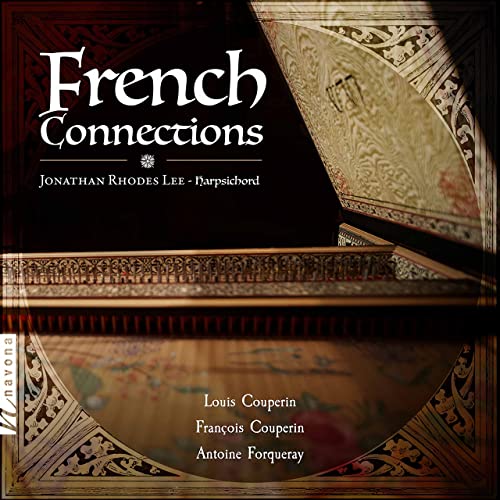
COLLECTIONS

Louis Couperin (1626-1661) - Pieces in F: Prélude - Pieces in F: Allemande Grave - Pieces in F: Courante - Pieces in F: Branle De Basque - Pieces in F: Chaconne François Couperin (1668-1733) - 17th ordre: La Superbe, Ou La Forqueray - 17th ordre: Les Petits Moulins à Vent - 17th ordre: Les Timbres - 17th ordre: Courante - 17th ordre: Les Petites Chrémières De Bagnolet Antoine Forqueray (1671-1745) - Selections from Suite no. 5: La Rameau - Selections from Suite no. 5: La Boisson - Selections from Suite no. 5: La Sylva - Selections from Suite no. 5: Jupiter
The old aphorism "you've heard one you've heard them all" could very well be applied to French baroque harpsichord music in general, especially when performed strictly as works for the keyboard, and without any attentiveness to certain stylistic and/or harmonic details. But Jonathan Rhodes Lee who, besides being an accomplished harpsichordist is also a published musicologist whose field of interest is 18th century music and composers, strives to expose in this recording subtle and/or obvious differences between these closely related composers, which bring out their dissimilar styles and techniques.
And speaking of closely related composers, François Couperin (often referred to as "Couperin le Grand"), was the nephew of Louis Couperin, who worked as an organist in Paris, and that's where the similarities end. Whereas the elder's basic style was rather conformist, François went on to write many instructional and practical volumes on harpsichord technique, and became a sought after performer because of his highly ornamented and animated playing. He was also one of the first to apply somewhat descriptive, yet whimsical subtitles to his pieces. For example, Les Petits Moulins à Vent (The Little Windmills) is characterized by a constant spinning motion tossed around from hand to hand. Innovation was this Couperin's calling card.
On the other hand, Antoine Forqueray is immediately identifiable by a more stately and sombre style. He also helped advance music forward by introducing distinctive and sometimes "odd" harmonic twists and progressions, highly obvious in La Rameau. And in Jupiter you can discern a phrasing similar to Johann Sebastian Bach's, and a glimpse forward into Haydn's early piano sonatas.
All in all an engrossing survey of music by composers who dedicated their skills to the development of keyboard music, performed on a sonically pleasant instrument captured in well-calibrated acoustics.
Jean-Yves Duperron - December 2021